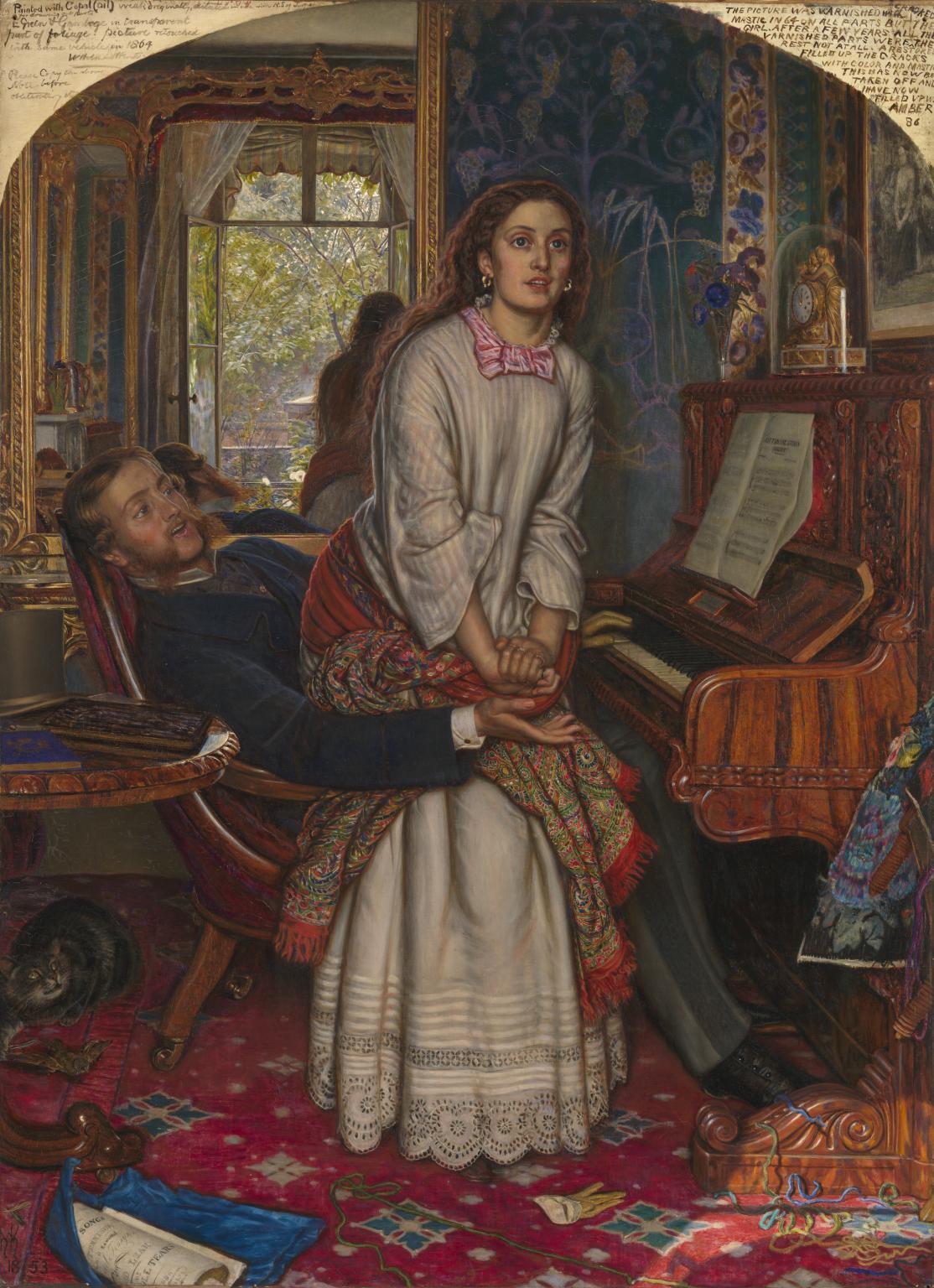
Painted by William Holman Hunt in 1853 The Awakening Conscience depicts a man and his mistress. The mistress is in the midst of a spirtual revelation about how her life needs to change, and she is going towards the light of redemption. Hunt was a founding member of the Pre-Raphealite Brotherhood along with Dante Gabriel Rosetti and John Everett Millais. The Pre-Raphaelites were against what they considered to be the unimagitive and historical painting of the Royal Academy and instead believed in art of serious subjects with maximum realism.
Event date
1853
Event date
Event date
Parent Chronology
Vetted?
No
